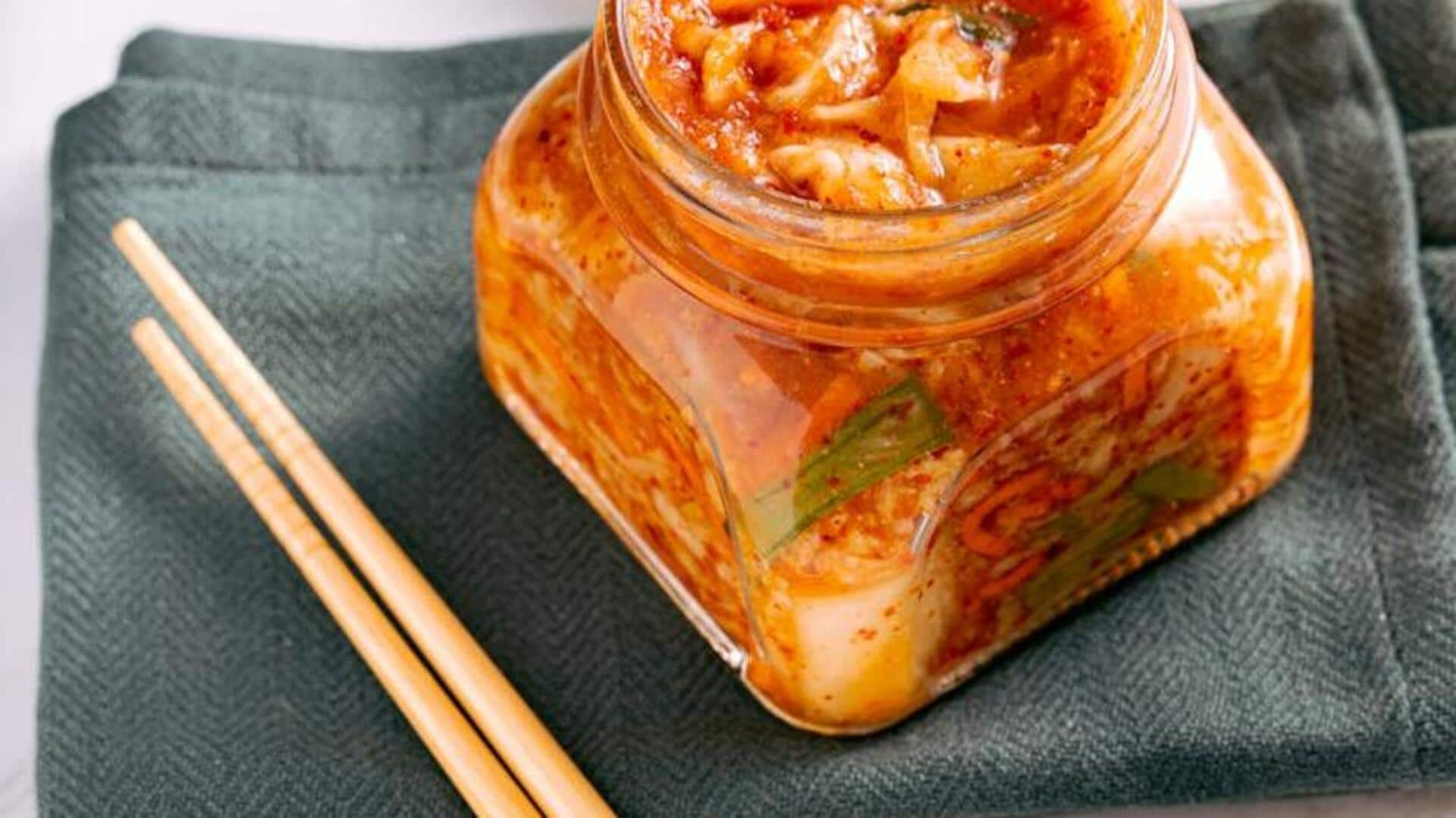
Essential ingredients for perfect kimchi
What's the story
Kimchi, the heart and soul of Korean cuisine, is a traditional side dish made from fermented vegetables. It's cherished for its unique, complex flavor and health-boosting properties. Creating authentic kimchi at home demands the right ingredients, ensuring you capture that signature taste and satisfying crunch. This article uncovers the essential staples for crafting traditional Korean kimchi.
Base
Napa cabbage: The foundation
Napa cabbage is the foundation of kimchi, acting as the primary vegetable. Its leaves are ideal for soaking up seasoning and fermenting uniformly. For a standard batch, you will need one or two heads of fresh napa cabbage. Pick cabbages that are firm and blemish-free for the highest quality kimchi.
Salt
Coarse sea salt for brining
The importance of coarse sea salt Coarse sea salt is crucial for brining cabbage as it facilitates preservation and fermentation. You need to be generous, roughly 1/2 cup per head is recommended. This salt not only extracts water and tenderizes the cabbage but also fosters an environment for good bacteria to flourish, which is vital for fermentation.
Chili
Korean chili flakes: The spice element
The Korean chili flakes (called gochugaru) are what give kimchi its signature red color and spicy kick. You can add more or less depending on how much heat you like, but a good place to start is around one-fourth cup of gochugaru per head of cabbage. For the best flavor, use real Korean chili flakes. Some things just can't be substituted!
Aromatics
Garlic and ginger: Flavor enhancers
Garlic and ginger are essential for providing that deep, complex flavor in kimchi. Usually, three to four cloves of garlic and a two-inch piece of ginger (per head of cabbage) are finely minced and incorporated into the seasoning blend. These aromatic ingredients not only enhance flavor but also offer extra health-promoting properties to kimchi.
Texture
Daikon radish: Crunchy texture
The daikon radish contributes a delightful crunchiness that significantly elevates the texture of the kimchi. You should aim to julienne or grate approximately one small daikon radish per head of cabbage utilized in your recipe. This ingredient provides a pleasing contrast to the softness of the fermented napa cabbage with its refreshing crispness.